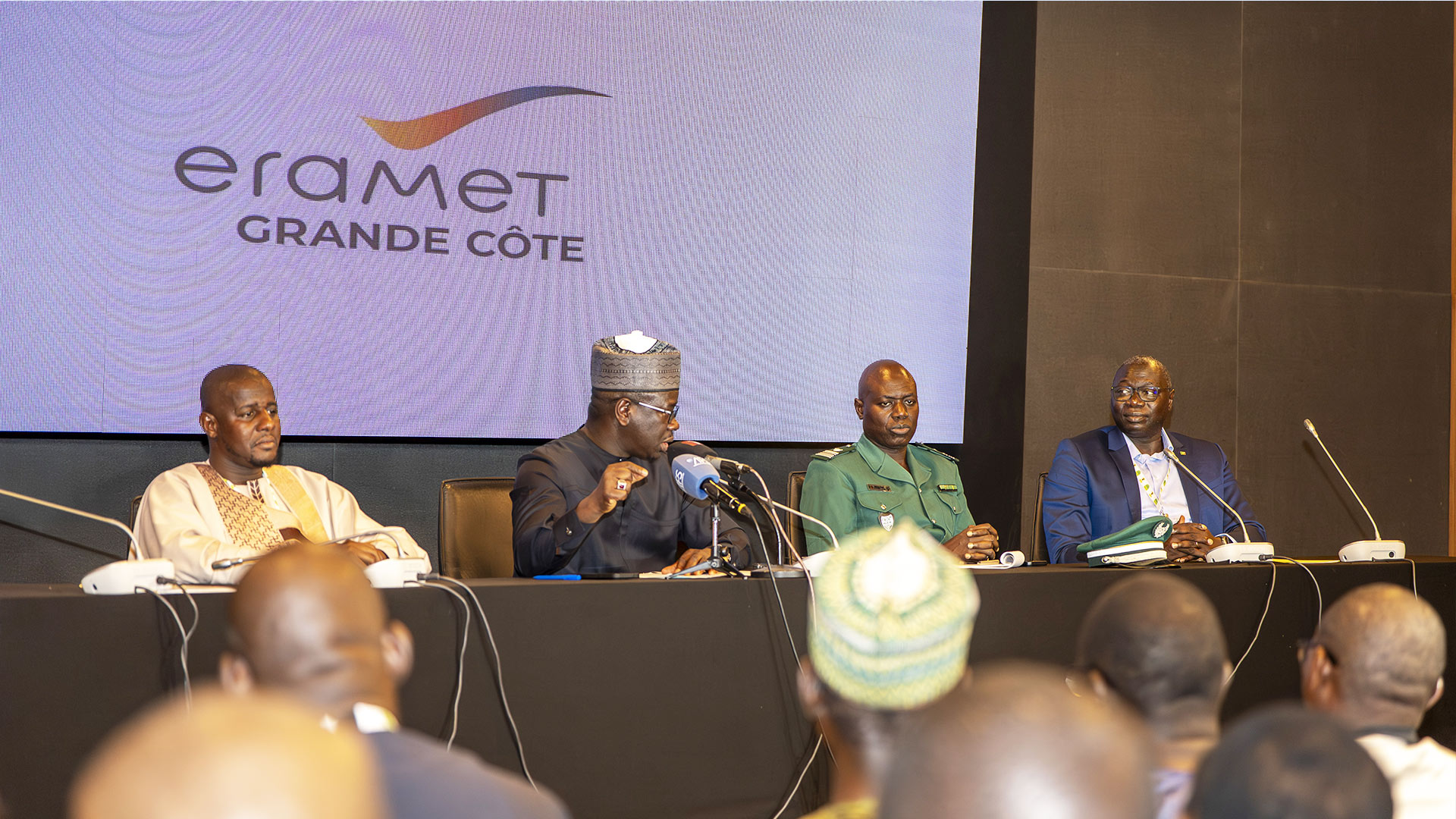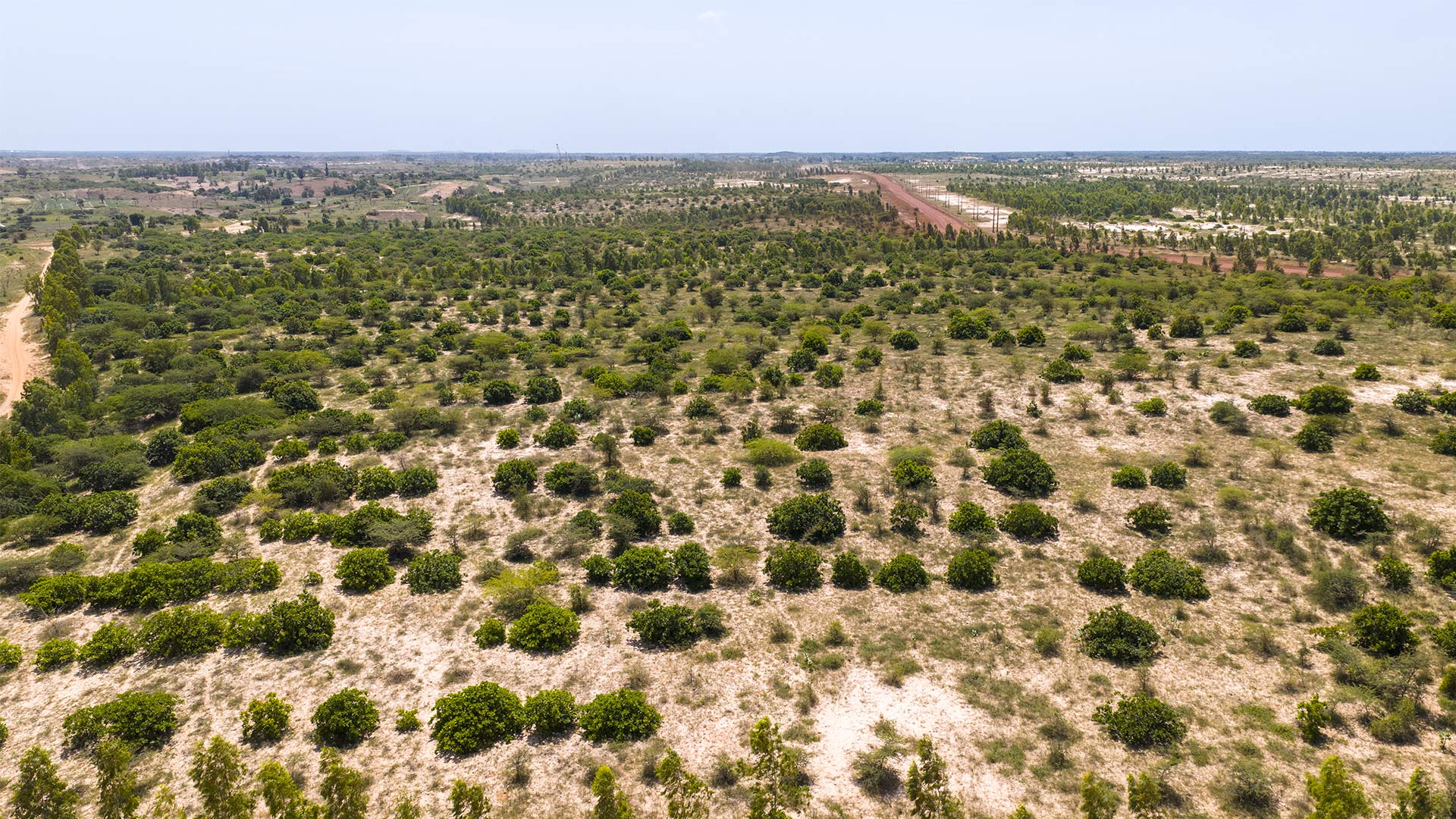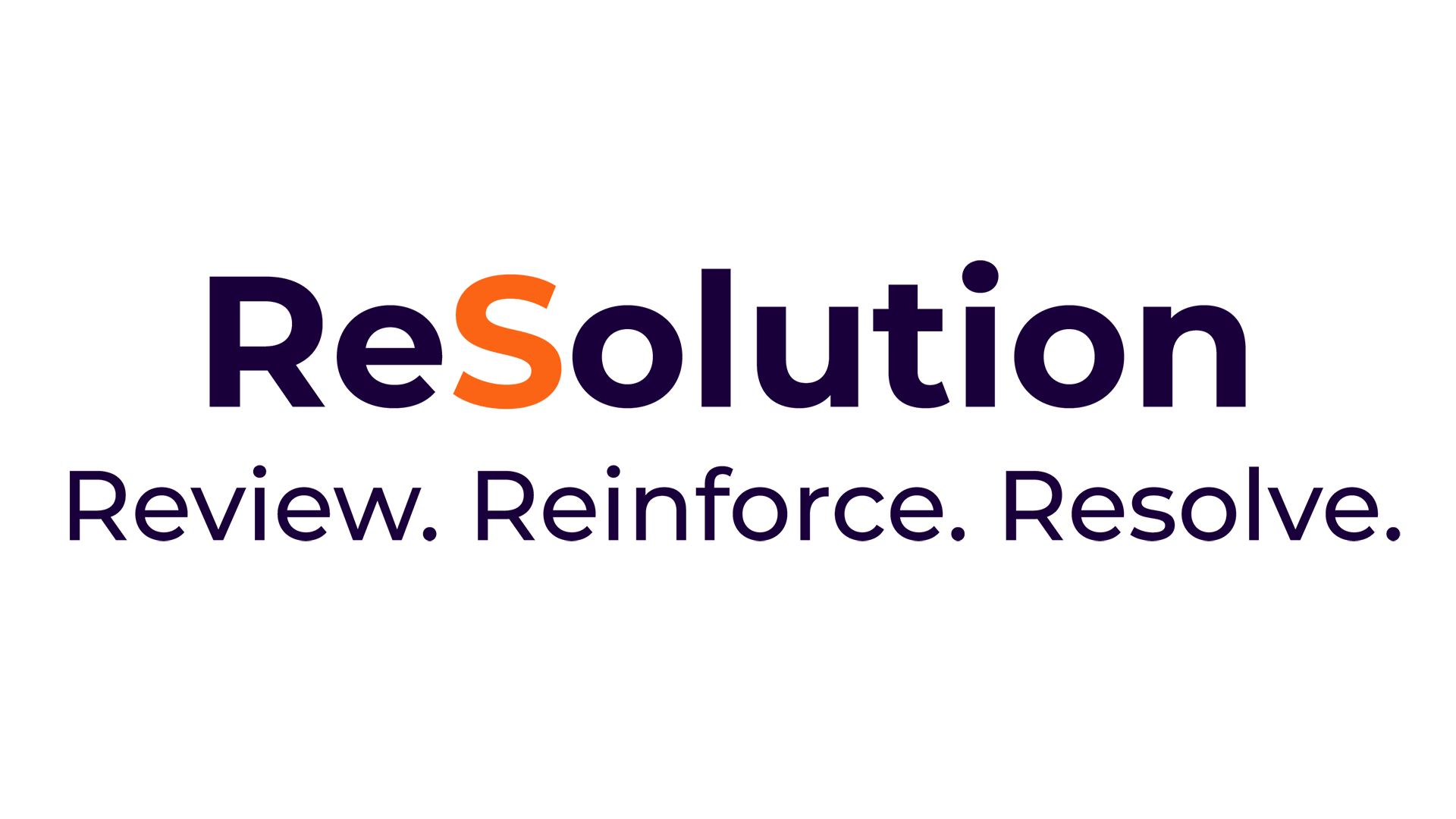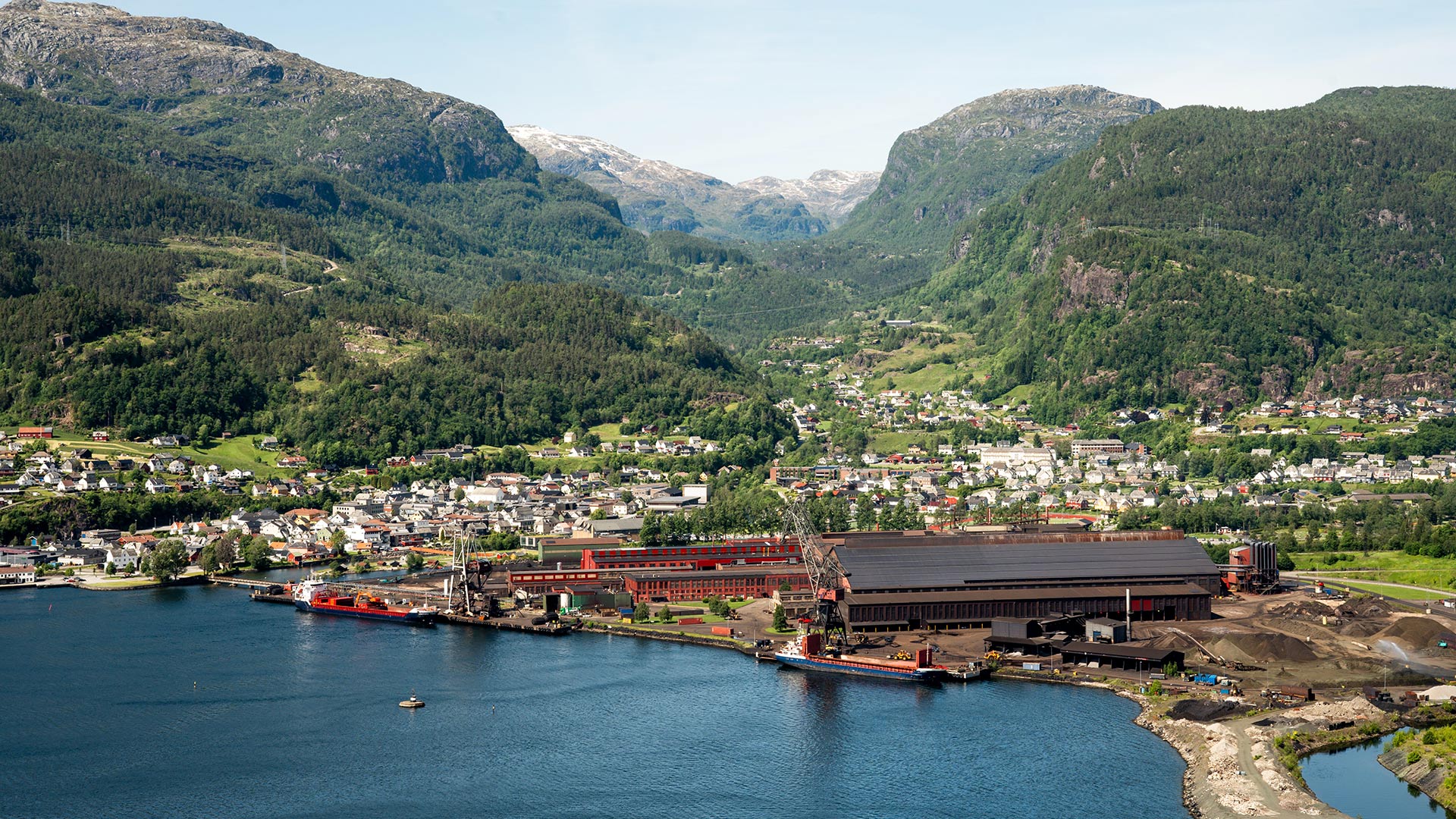A major new step toward responsible and sustainable mining
Eramet Grande Côte (EGC), the Senegalese subsidiary of the Eramet group, officially handed back 1,000 hectares of fully rehabilitated land to the State of Senegal during the International Mining Exhibition (SIM) in Diamniadio in early November.
This operation marks a further step in the progressive rehabilitation program led by EGC, already a pioneer in Senegal with an initial restitution of 85 hectares in 2022. It illustrates the fulfillment of Eramet’s commitments to responsible and sustainable mining.
The Group is committed to gradually rehabilitating previously mined areas, returning them to a state as close as possible to their pre-mining condition—or even in better condition. This goal is at the heart of our CSR roadmap, Act for Positive Mining, which aims for a rehabilitation rate above 1—that is, rehabilitating more land than is cleared for mining operations.

Land handover ceremony for revegetated areas. From left to right: Ibrahima Gassama, Director General of Mines and Geology; Birame Souleye Diop, Minister of Energy, Petroleum and Mines; Colonel Babacar Dione, Director General of Water and Forests; and Frédéric Zanklan, Managing Director of Eramet Grande Côte.
A national benchmark in environmental rehabilitation
As the first mining company in the country to return rehabilitated land on a large scale, Eramet Grande Côte places progressive land rehabilitation at the core of its mining model.
The areas handed over were mined between 2015 and 2018. The “Oasis of Senegal,” an emblematic tourist site developed on behalf of the State with a 2 billion FCFA investment, was also handed back during this operation.
An approach carried out in consultation with local communities
EGC’s rehabilitation work is based on a participatory approach, involving local authorities, technical services of the State, and neighboring communities. Together, they define which plant species are replanted and how the sites will be used in the future.
Each year, once mobile mining operations are completed, nearly 180 hectares are replanted with care to recreate natural landforms. The selected species—casuarinas, cashew trees, eucalyptus—help stabilize dunes, restore soil fertility, and foster new local activities such as agriculture, agroforestry, beekeeping, or biomass energy production.
These efforts contribute to the environmental resilience of northern Senegal’s coastline and have been praised by the authorities. The 2023 audit report by the Directorate of Mines cited EGC as a national benchmark for environmental best practices.




